Bonjour, design enthusiasts! Are you ready to add a dash of French flair to your living spaces without feeling overwhelmed? Fear not, because we're about to embark on a journey through the enchanting world of French patterns, and we promise, it's going to be très magnifique!
French patterns, known for their timeless elegance, might seem a tad much at first glance. But here's the secret: You don't need to be a seasoned interior designer to make them work in your home. We'll show you how to use them in a modern and pared-back way to achieve a chic interior that's both stylish and comfortable.
So, grab your beret and let's dive into the world of toile, fleur-de-lis, and damask, demystifying these patterns and learning how to incorporate them effortlessly into your home.
Toile de Jouy:
Let's start with a pattern that's quintessentially French - the Toile de Jouy. The enchanting Toile de Jouy, often simply called "toile," was born in the 18th century in Jouy-en-Josas, a town near Paris. The pioneer behind it was Christophe-Philippe Oberkampf, a celebrated textile manufacturer. Toile de Jouy captivated hearts with its exquisite scenes and narratives woven into the fabric. These vignettes often depicted pastoral life, mythological tales, or far-off places, making it a symbol of luxury and refinement during the Rococo and Neoclassical periods.
To incorporate Toile into your decor, consider upholstering a classic armchair or using it for throw pillows and curtains. For a modern twist, opt for a monochromatic color scheme or use it sparingly as an accent.


Chinoiserie:
Chinoiserie is the European interpretation of Chinese and East Asian aesthetics. The style emerged in the 17th and 18th centuries, coinciding with Europe's growing trade with Asia. European nobility and the aristocracy were enamored by the allure of Chinese culture and art. Chinoiserie patterns adorned their homes with pagodas, dragons, birds, and idyllic landscapes, finding a prominent place in European palaces and interiors during the Rococo era.
Incorporate Chinoiserie patterns with wallpaper featuring delicate birds, pagodas, or floral motifs. Pair it with sleek, contemporary furniture to strike the perfect balance between classic and modern. Incorporating traditional blue and white ceramic accents, like ginger jars and vases, can also be a very chic and easy way to infuse your home with Chinoiserie .




Fleur-de-lis:
The fleur-de-lis is a symbol of French royalty and when added to your décor, can be a wonderfully subtle nod to French tradition. Translating to "lily flower" in French, the fleur-de-lis has deep roots in French symbolism dating back to medieval times. The timeless emblem symbolized purity, power, and honor and found its place on the coats of arms of French monarchs, becoming an enduring symbol of France itself. You can find it on textiles, wallpapers, and even as a motif on furniture. To achieve a modern look, go for clean lines and neutral colors with subtle fleur-de-lis accents.


Stripes:
French stripes, often referred to as "mariner stripes" or Breton stripes are a timeless pattern that exudes a nautical and sophisticated feel. They have been utilized in textiles for centuries, particularly in the 19th century when they gained popularity thanks to their adoption in the French Navy's uniforms. Coco Chanel later brought them to the forefront of fashion, solidifying their status as a symbol of French elegance. Stripes also have become an iconic symbol in the Riviera from the nautically striped blue and white umbrellas seen on the beaches of Cannes and Nice. French grain sack pattern, another striped motif, is seen in French country decor.
You can incorporate stripes into your decor with throw pillows, area rugs, furniture or even as an accent wall. Bold color stripes like black and navy make a statement, or opt for soft, muted colors to maintain the pared-back aesthetic.




Damask:
Damask patterns are known for their intricate, often tone-on-tone designs woven into the fabric. Damask fabric takes its name from Damascus, a city known for its luxurious textiles in ancient times. It was introduced to Europe during the Middle Ages. They were highly prized in European courts for their beauty and sophistication and remain associated with luxury and refinement.
To achieve a modern French chic look, use damask as a focal point on upholstery or curtains. Combine it with contemporary furniture pieces in solid colors to create a visually appealing contrast.


Provençal Prints:
With vibrant colors and rustic charm, Provençal prints can bring a warm and inviting feel to your space. Often featuring vivid, sun-soaked colors and floral or Mediterranean motifs, they evoke the warmth and beauty of the French countryside and have been embraced for their welcoming and homey feel.
Use them for tablecloths, napkins, or even as wallpaper in the kitchen or dining area. Complement the look with rustic wooden furniture and simple, uncluttered accessories.


Remember, the key to achieving a modern, pared-back French decor look is balance. Incorporate these timeless patterns sparingly and combine them with clean lines, neutral colors, and contemporary furniture. This way, you'll create a space that feels both classic and up-to-date, embodying the essence of French chic with a fresh twist. So, go ahead, channel your inner Parisian, and transform your home into a stylish haven that's très chic!
